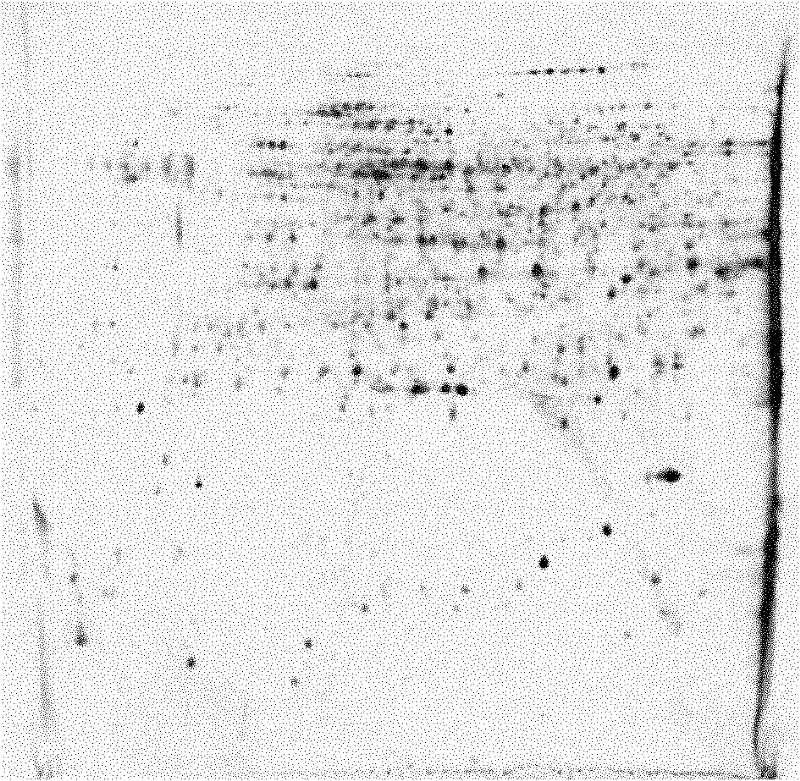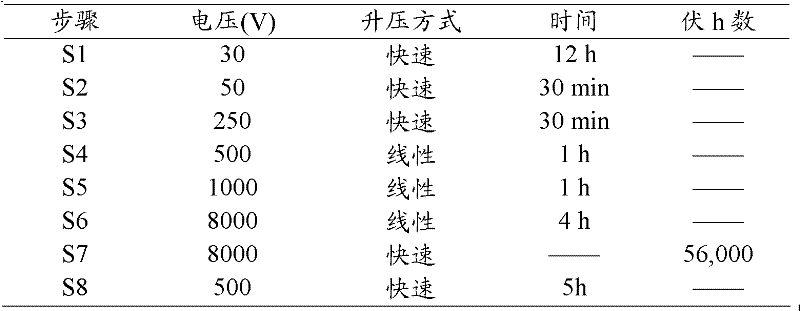Two-dimensional gel electrophoresis separation method of rice total protein under heavy metal stress
A separation method and heavy metal technology, applied in the field of protein separation and purification
- Summary
- Abstract
- Description
- Claims
- Application Information
AI Technical Summary
Problems solved by technology
Method used
Image
Examples
Embodiment 1
[0023] Embodiment 1 reagent formula
[0024] 30% polyacrylamide stock solution
[0025] Acrylamide 150g
[0026] Methylenebisacrylamide 4g
[0027] Double distilled water to 500ml
[0028] After filtering through a 0.45 μm membrane filter, the brown bottle was stored in a refrigerator at 4°C.
[0029] 1.5M Tris base pH8.8
[0030] Tris base 90.75g
[0031] Double distilled water 400ml
[0032] Adjust the pH to 8.8 with 1M HCl, add double distilled water to make the volume to 500ml. Store in refrigerator at 4°C. 10% SDS
[0033] SDS 10g
[0034] Double distilled water to 100ml
[0035] After mixing, store at room temperature.
[0036] 10% AP (ammonium persulfate)
[0037] AP0.1g
[0038] Double distilled water 1ml
[0039] After dissolving, store in the refrigerator at 4°C, and it is best to use and prepare immediately.
[0040] 10× electrophoresis buffer
[0041] (1×buffer=25mM Tris, 192mM glycine, 0.1% SDS, pH8.3)
[0042] Tris base 30g
[0043] Glycine 144g...
Embodiment 2
[0082] Embodiment 2 test material and paddy rice cultivation
[0083] Using rice Zhonghua 11 (Oryza sativa L. subsp. Japonica) as a material, select plump and healthy rice seeds, treat them with 1% dilute nitric acid for 12 hours to break dormancy, and wash them with distilled water. Then sterilized with 0.5% NaClO solution for 15 minutes, washed with distilled water, and placed in a petri dish covered with wet filter paper (all at 30°C). After 3 days, transfer to the grid for one week of hydroponic culture (pH 5.0-5.6), then culture with 1 / 2 rice nutrient solution for one week, then culture with full nutrient solution, and use HgCl when it grows to the 6-leaf stage 2 deal with.
Embodiment 3
[0084] The extraction of embodiment 3 rice root total protein
[0085] Adopt improved trichloroacetic acid (TCA)-acetone precipitation method, concrete steps are as follows:
[0086] (1) Take 2.0-3.0g of rice material and grind it thoroughly in liquid nitrogen (the mortar can be pre-cooled in a -20°C refrigerator in advance, and then pre-cooled with liquid nitrogen) until it becomes white powder.
[0087] (2) First add 25ml-20°C pre-cooled TCA extract (10%TCA, 0.07%DTT), mix well (use a gun tip to smash the powder and wash down the sample on the wall), put it in a -20°C refrigerator Precipitate in medium for 2h.
[0088] (3) Centrifuge at 20,000×g for 15 min at 4°C, discard the supernatant, and collect the precipitate.
[0089] (4) Add 20ml-20°C pre-cooled sample washing solution (acetone containing 0.07% DTT), mix thoroughly (the powder can be crushed with a tenon), and put it in a -20°C refrigerator for 2 hours.
[0090] (5) Centrifuge at 20,000×g for 15 min at 4°C, disca...
PUM
 Login to View More
Login to View More Abstract
Description
Claims
Application Information
 Login to View More
Login to View More - R&D
- Intellectual Property
- Life Sciences
- Materials
- Tech Scout
- Unparalleled Data Quality
- Higher Quality Content
- 60% Fewer Hallucinations
Browse by: Latest US Patents, China's latest patents, Technical Efficacy Thesaurus, Application Domain, Technology Topic, Popular Technical Reports.
© 2025 PatSnap. All rights reserved.Legal|Privacy policy|Modern Slavery Act Transparency Statement|Sitemap|About US| Contact US: help@patsnap.com


